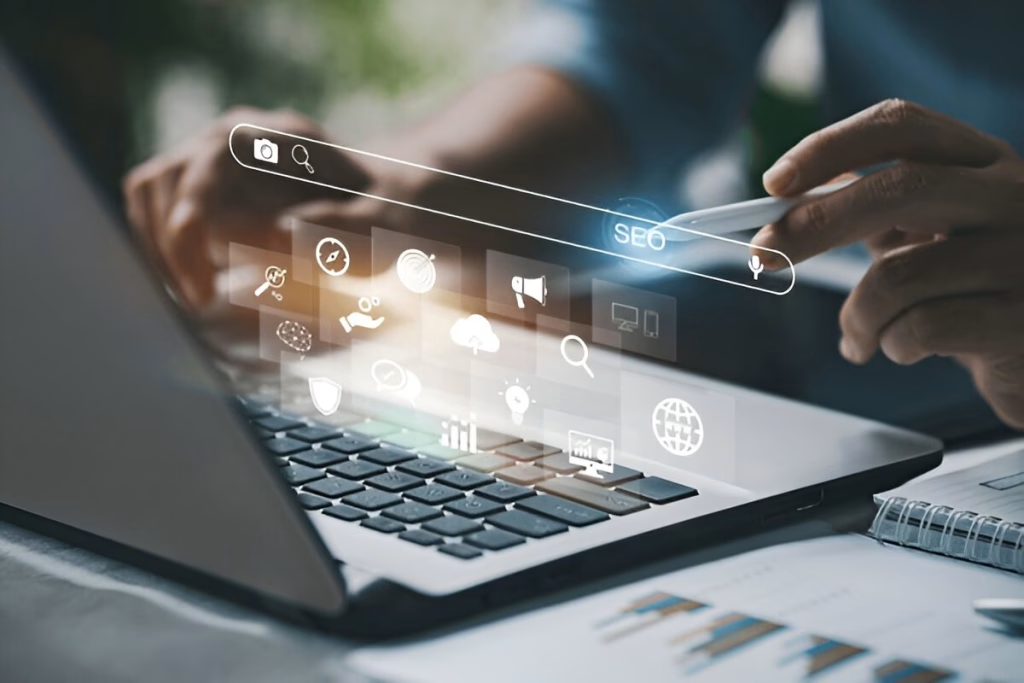The rise of remote work has changed how businesses manage employees. With teams spread across different locations, traditional HR practices are no longer effective. To keep up with this shift, HRMS systems have been evolving rapidly. In 2025, businesses are adopting advanced solutions that automate administrative tasks, enhance employee engagement, and improve workforce productivity. From automated payroll processing to AI-driven analytics, these systems are improving efficiency while ensuring compliance with labor laws. As a result, businesses can focus on strategic growth while HR operations run smoothly.
The Growing Need for HRMS Systems in Remote Work
With more employees working from different locations, businesses are facing challenges in managing HR operations. Tracking attendance, managing payroll, and ensuring employee engagement have become more complex. The absence of a centralized physical workspace has made it difficult for HR teams to monitor productivity and compliance. To address these issues, HRMS systems are being upgraded with AI-driven tools, cloud-based accessibility, and better integration with communication platforms. These advancements allow HR teams to automate routine processes, reduce human errors, and ensure seamless communication with remote employees. As a result, businesses can create a well-organized and efficient remote work environment.
See how Munshify HRMS systems make remote work easier – Request Free Demo Now!
Key Features of Modern HRMS Systems
The latest HRMS systems come with several features designed to improve remote work management. These features ensure smooth HR operations, allowing businesses to focus on employee satisfaction and productivity.
Automated Attendance Tracking
Traditional attendance tracking methods, such as manual timesheets, are no longer efficient for remote work. Modern HRMS systems use AI-powered tools to automatically record employees’ log-in and log-out times. Some systems even use facial recognition and geofencing technology to verify employee attendance. This automation reduces the risk of time fraud and ensures that work hours are accurately recorded.
Cloud-Based Payroll Management
Payroll processing is one of the most critical HR functions, and errors can lead to employee dissatisfaction. HRMS systems in 2025 provide cloud-based payroll management that automates salary calculations, tax deductions, and compliance with labor laws. This ensures that employees receive their salaries on time, no matter where they are located. Additionally, automated payroll minimizes the chances of miscalculations, reducing financial discrepancies within organizations.
Performance Monitoring Tools
Managing remote teams requires a data-driven approach to track productivity. Modern HRMS systems integrate AI-driven analytics to monitor employee performance based on key performance indicators (KPIs). These tools generate real-time reports that allow managers to identify high-performing employees and pinpoint areas where additional support is needed. This feature boosts workforce efficiency and helps ensure business goals are met.
Seamless Integration with Communication Tools
Effective communication is crucial for remote work management. To address this, HRMS software are now integrated with popular communication platforms like Slack, Microsoft Teams, and Zoom. These integrations allow employees to access HR-related services without switching between multiple applications. This streamlined approach improves efficiency and enhances collaboration between teams.
Enhanced Security and Compliance
Data security is a top concern for businesses managing a remote workforce. Modern HRMS systems are equipped with advanced security features, including end-to-end encryption, multi-factor authentication, and role-based access control. These measures protect sensitive employee data from unauthorized access. Additionally, compliance tools within these systems help businesses adhere to labor laws and regulations, reducing the risk of legal complications.
Learn More: Why Investing in HRMS Solutions is a Game-Changer for Your HR Team in 2024
Benefits of HRMS Systems for Remote Teams
The adoption of HRMS systems in remote work management offers multiple benefits that help businesses operate more efficiently. These benefits contribute to an organized and productive work environment.
Increased Efficiency
With automated administrative tasks, HR teams can focus on strategic planning rather than spending time on repetitive processes. Automated functions like payroll management, attendance tracking, and performance evaluations eliminate manual errors and enhance overall efficiency.
Better Employee Engagement
Engaging remote employees is a challenge, as they often feel disconnected from their teams. Modern HRMS systems offer employee engagement tools such as virtual feedback sessions, peer recognition programs, and AI-driven surveys. These features help HR teams understand employee concerns and take proactive steps to improve workplace satisfaction.
Accurate Payroll Processing
Ensuring accurate and timely salary payments is essential for maintaining employee trust. With cloud-based payroll automation, HRMS systems eliminate manual errors in salary calculations and tax deductions. Employees can access their payroll details from anywhere, making the process more transparent and reliable.
Compliance with Labor Laws
Labor laws vary across different regions, making compliance challenging for companies with a global workforce. HRMS systems are designed to keep track of regulatory changes and automatically adjust HR policies to ensure compliance. This reduces the risk of fines and legal issues, allowing businesses to operate smoothly.
Data-Driven Decision Making
HR analytics tools integrated into HRMS systems provide valuable insights into workforce trends, employee performance, and productivity levels. These insights help HR professionals make informed decisions that contribute to business growth. With AI-driven reports, organizations can identify patterns and optimize their HR strategies effectively.
The Future of HRMS Systems in 2025
By 2025, HRMS solutions will continue to evolve, offering even more sophisticated solutions tailored to remote work. AI and machine learning will take a larger role in predicting employee behavior, improving workforce management, and personalizing HR processes. Additionally, blockchain technology will enhance security and ensure transparency in payroll systems for salary payments. Virtual reality (VR) tools could be incorporated to create immersive employee training programs, improving skill development for remote teams. As businesses embrace digital transformation, HRMS systems will advance, helping organizations maintain efficiency and competitiveness in a remote work environment.
As remote work becomes the norm, businesses must adapt to new HR challenges. The latest HRMS systems are transforming workforce management by automating administrative tasks, improving employee engagement, and ensuring compliance. By leveraging AI, cloud technology, and data analytics, companies can enhance productivity and maintain strong connections with their remote employees. As these systems continue to evolve, businesses will gain access to even more innovative tools that support a flexible and efficient remote work environment in 2025 and beyond.
FAQs
1. What is an HRMS system, and how does it help remote teams?
An HRMS system is a human resource management software that automates HR tasks such as payroll, attendance tracking, and performance monitoring. For remote teams, it ensures seamless communication, enhances employee engagement, and simplifies compliance with labor laws.
2. How do HRMS systems improve payroll processing for remote employees?
HRMS systems automate salary calculations, tax deductions, and compliance tracking. Cloud-based payroll management ensures that employees are paid accurately and on time, regardless of their location.
3. Can HRMS systems help track employee productivity in remote work?
Yes, modern HRMS systems integrate AI-driven analytics that monitor productivity, track key performance indicators (KPIs), and generate real-time reports to help managers assess employee performance.
4. Are HRMS systems secure for handling sensitive employee data?
Absolutely. Advanced HRMS systems incorporate security features such as encryption, multi-factor authentication, and access control to ensure that sensitive HR data remains protected.
5. What future trends can we expect in HRMS systems?
By 2025, HRMS systems will leverage AI for predictive analytics, blockchain for secure payroll transactions, and virtual reality for employee training programs, making them more advanced and efficient.
Visit Munshify.com to explore advanced HRMS solutions for managing your remote workforce with ease.


